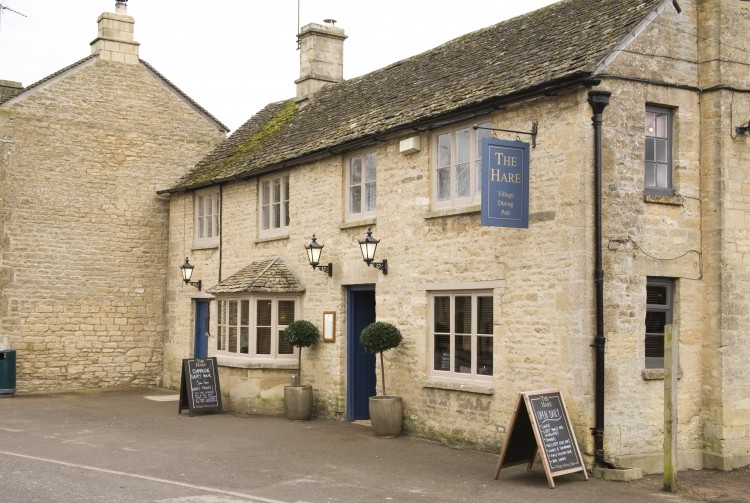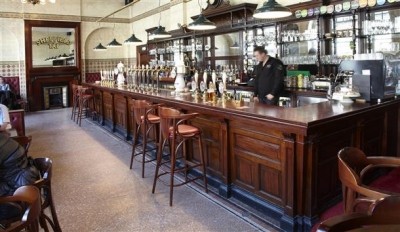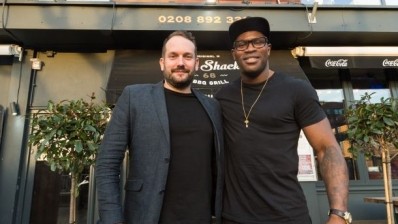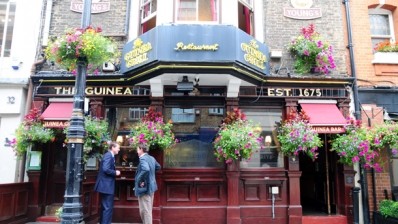My pub: The Hare, Milton-under-Wychwood, Oxfordshire

The publican
This is my 10th pub in 23 years, and the business we have today is the culmination of many years of hard work. I see a failing pub and, although I couldn’t necessarily turn it instantly into a gold mine, I know the takings and certainly the morale of the staff could be increased relatively simply and quickly.
Need to know
Address: Milton-under-Wychwood, Oxfordshire
Tenure: Freehold
Licensees: Sue and Rachael Hawkins
Staff: eight full time, four part time
Weekly turnover: £15,000 to £18,000
Wet:dry split: 40:60
Food GP: 67%-69%
Projected net profit for first year: £140,000
It’s about buying right and selling right. At the end of the day, it’s a business. I have a barrow boy mentality I suppose, and some might see me as a property developer. But I’m a property developer who’s passionate about the industry we’re in.
In fact, I’ve never put a pub on the market but always been approached to sell. Brakspear has bought the last two.
These days I work with my niece, Rachael Hawkins. We own the business 50:50 and we do everything between us. I do the design and start-up, then Rachael takes over the operations.
The kudos of catering has grown over the past five years and, overall, our offer now is a much higher standard and more tailored. We have to fight for our market share by offering good value for money, a great welcome, consistently high standards and as good a service on a quiet Monday as on that busy Saturday.
The pub
We bought the Hare a year ago and opened in March. There’s no other pub in the village and it had been shut for five years. It was listed as an asset of community value and the local residents had waged a long campaign for it to remain a pub. Now they’ve got what they wanted!
We paid £200,000 for it and we’ve spent a decent amount on it. The furnishings came from the George at Shipston-on-Stour, Warwickshire, one of my old pubs that was being refurbished. So, in a sense, we’ve bought our own pub back, and it makes the place feel pleasantly old.
The Hare has to be both drinker and diner-friendly so, although it’s only small, we’ve zoned it into a bar and a dining room and another space with sliding doors that can be used for private parties.
There are our usual design signatures – holes in tables for champagne buckets, plenty of cushions and candles, a magnifying glass with the menu and an old piano for the cutlery. A selection of reading material is always welcome.
Before we opened, we asked the village whether anyone could do a picture of a hare and 30 arrived – they’re now on the wall of the dining room – and someone left their taxidermy on the doorstep, too, so we have a couple of stuffed hares.
The trade
We needed a campaign to get the locals on board with what we wanted to do here so we created a Facebook page to keep them up to date with progress while the pub was being developed and tell them what we needed. That was good PR and the village really got on board. They understand it as their pub.
While we cater for all parts of the community, I wouldn’t say we are family-friendly. There just isn’t enough room in here. That doesn’t mean we turn families away but there are no kids’ menus, no high chairs. You should choose to do what you know you can do well, and not try to appeal to everyone.
We also close in the afternoons, which I don’t usually like to do, but there wasn’t any interest in us being open then.
We were taking between £17,000 and £22,000 a week when we first opened. Now that’s settled down to between £15,000 and £18,000.
The pub is just that size where we don’t need any more staff however busy it is, so that keeps the costs down, and we’re on course for a £140,000 net profit in our first year.
The team
It’s happy staff that give a pub a great atmosphere, so they’re very important to us. We could have used the five bedrooms here as letting accommodation but we’ve chosen to make them staff rooms.
We train people in our own quirky way. We do the statutory health and safety stuff, of course, but the rest is done by some kind of osmosis, and we have so many people who come with us from project to project and know how we work.
Henrietta Stanley, our assistant manager, has been with us for the previous three projects, and we’ve got just the right sort of chef for this business in Matt Dare. He’s got the talent without the ego attached and is happy to make a baguette on a Monday lunchtime.
The food
We aim for a luxury offer, however little or much someone spends. If you only want a sandwich, it’s a great sandwich.
We love being in the Cotswolds. There are so many artisan suppliers, a hotbed of talent that can give us everything we could possibly need. We have a symbiotic relationship with them.
The fish board is the big thing here. That’s the chef’s passion and we have fresh fish in from Dartmouth and Cornwall every day. There’s also a bar snacks board offering hot snacks such as fried halloumi, mini sausages, scampi and mini cottage pies for £6.
On a Sunday, we serve roasts until 9pm and from 7pm have a mellow acoustic set in the bar. It brings in a lot of trade.
We aim for a 70% GP on our food and we hit 67% to 69% here, but 65% would be fine. We’re offering affordable luxury and it’s a false economy if you start cutting back. You have to be generous-spirited in the hospitality business and there’s always little extras like bottles of water on the tables.
The drink
The 60:40 dry:wet split here is a high booze level for us. It’s to do with being in the village and the hub of the community.
Carlsberg UK has supplied the beers for our past six or seven pubs and looks after the dispense and the cellar cooling for us. We also serve beers from local artisan brewers, which is what the focus of a freehouse should be.
We have fun with cocktails and, on Fridays, it’s Champagne happy hour from 5pm.
The future
I think it might be time for us to run a small group of two to four pubs. We have so much talent in our little company and it will create more promotion prospects for people. I’ll take on an umbrella role, pulling it all together.
I also have some side projects in mind – like painting and selling our cutlery pianos to other pubs and restaurants.





